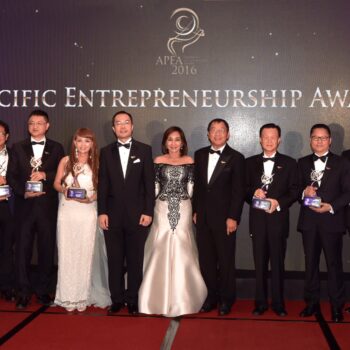(Women on Top in Tech is a series about Women Founders, CEOs, and Leaders in technology. It aims to amplify and bring to the fore diversity in leadership in technology.)
Here is our interview with Samantha John, Co-Founder of Hopscotch. Hopscotch is a programming tool for kids and the first programming language designed for a touch screen device. Samantha John studied Applied Mathematics, English and Comparative Literature at Columbia University. She fell in love with programming during her senior year. Since then, she’s been on a mission to introduce every kid to this amazing skill.
What makes you do what you do?
I think there are a few reasons. On a personal level, it’s a lot of fun to run your own company and to get to be your own boss. For me, it’s very empowering and fulfilling. On a broader level, I very much believe in our mission, to introduce to the younger generation the power of computing and try to change the way people interact with how they think about computers. So that they don’t just think of it as a machine that delivers them videos, it is also a tool that they can use to extend their own capabilities and extend the power of their minds. The fact that we are working towards the future through our own small way, feels very fulfilling to me. In terms of where I do want spending my time and my energy.
How did you rise in the industry you are in?
I started my professional life as a programmer. My very first job was in QA, I was testing software by going through website to figure out if there are any bugs in it. I’ve worked as a software developer, software engineer for a couple of years, and finally felt that I understood the software development process well enough.
My cofounder and I had worked out a few different ideas together, none of which had been super exciting tasks — at least nothing had been exciting enough to make us feel that we were ready to go all out and quit our jobs and do full-time. But when we started to build our Hopscotch, finally, that felt right. It felt exciting, this is something that we will be willing to dedicate multiple years of our lives into.
Why did you take on this role/start this startup especially since this is perhaps a stretch or challenge for you (or viewed as one since you are not the usual leadership demographics)?
In terms of how we actually started the company, Jocelyn and I, for the first year and a half did not raise any money or even have a product or revenue or anything so, we would do various consulting jobs on the side. We would work on Hopscotch four days a week and then on the fifth day we would devote ourselves to our other various money-making activities. That took a lot of pressure on us. We were not sitting here like watching our bank accounts dwindle as we desperately tried to get this off the ground. We thought it is going to take a while and then we’ll be on a steady state. We were not like doing great financially but we were paying our rent, we were not just like pleading money all the time and I think that lack of putting ourselves in a none stressful situation was really important in able for us to do good work.
Do you have a mentor that you look up to in your industries or did you look for one or how did that work?
One of our mentors is Alan Kay. He’s one of the pioneers of programming and computer science. He invented the term object oriented programming, and he was very active in the kind of field. We met to teach children how to program and to bring programming as a tool for education. So, I talked to him a lot in terms of making sure that we’re doing the right thing for kids. I think with education there’s a temptation to think that you’re an educator so obviously you’re doing good for the world and I don’t think that’s necessarily true. You can do very bad things to the world through education because you’re influencing how the next generation of people will think. So, I’ve got to be very careful about what we were trying to teach the kids. And Alan has been a really great person to talk through ideas like that.
How did you make a match if you did, and how did you end up being mentored by him?
We knew who he was because he’s a very famous computer scientist. Basically, we really wanted Allan Kay to be our mentor and Jocelyn, my co-founder, has the full credit for this. We worked our way, getting friends with various people in his circle and eventually were introduced to him. He met us and we had gotten along really well. It was very much, kind of, knowing that he was someone who we wanted to be in our team to help us out and to talk to. And strategically figuring out how to meet him and how to get him on board.
Now as a leader how do you spot, develop, keep, grow and support your talent?
One thing that interests us the most, that time with very talented team members, is that they have very high expectations of their leadership. We’ve had various people work for us over the years and the people who are the best tend to also complain the most. One of the most valuable things that these people bring to the table is when things aren’t running as wells as they feel they should see you and help you find your course correctly. So I do one on one meeting with the people who are important to me on our team every two weeks. And give them a chance to bring up what they think is going well and what they think is not going well. I listen to them, which I think is what a lot of people are looking for. Like for people who are very smart and effective, they want to feel they’re empowered to be effective in their role. That when they have ideas, they’re being listened to. So, it’s very important to me to actually listen to the people I’m working with.
Do you consciously or unconsciously support diversity and why?
Consciously, Yes. One thing about diversity is that like, we, the two co-founders are women and we’ve historically hired a lot of women in our company. There are not as many women in the tech world but in terms of the actual number of people in our company, we hired a lot of women. And I think about this in terms of all these companies that have trouble hiring women and I think that there is something to it. As a female, it’s easier for me to connect with women. We have more women in the team and it’s just seems to happen naturally, that we hire a lot of women. They are people who we worked best with. I’m sure it’s also true for men who were running companies and end up hiring a lot of men. So I don’t know if we are pro-actively doing that much for diversity. But someone considers our team diverse. Three women and one non-Caucasian guy from Mexico.
What is your take on what it takes to be a great leader in your industry and as a general rule of thumb?
I think what’s important but hard to do is that as a leader, you both need to be able to zoom out and think about the big picture. Think about, “Where’s my company going in a year? In 5 years? In 10 years?” Whether it aims like, “are we doing that?” and then you also need to zoom in on the details when necessary and write that update to your investors or make sure that the sales emails are going out. Whatever it is that you need to know both when to zoom in on the details, and be able to take a step back and work on the big picture and making that context which is kind of very unnatural thing and it’s hard to do and getting the right mix of that. I think those are really important in being a good leader.
Advice for others?
One piece of advice I have for people, maybe for those who want to be entrepreneurs, those people who are thinking about starting their own thing, is that it is a good idea. I’ll tell you a story. When we started Hopscotch, we did not quit our jobs to start Hopscotch. We did it on nights and weekends. And I think that’s really important, that before we even care for the idea of Hopscotch popping up, we’ve worked on other things at nights and weekends while we were still working, and I think it is important to have other alternatives at all times. So instead of working at Hopscotch I could have gone out with my friends or could’ve written a book or there are things that I could have done and there other ways to advance professionally and because of us having alternatives, there was a moment when it became very clear and that I wanted to do Hopscotch more. That I wanted to do any of those other things and that I knew I was ready to quit my job. I’ve seen many friends quit their jobs because they want to do a start-up. Maybe they were a bit fed up with their jobs at that moment and they became a little bit lost because the only thing they have to do was to search for their next big thing. And it is hard to evaluate whether the ideas that they’ve come up with are going to be better than the alternative. Because the alternative is just continuous searching, which is somewhat a hard place to be in. And I think people get a bit lost when they don’t have any constraints to focus their mind and their energy at.
If you’d like to get in touch with Samantha John, please feel free to reach out to her on LinkedIn: https://www.linkedin.com/in/samanthajohn/





























